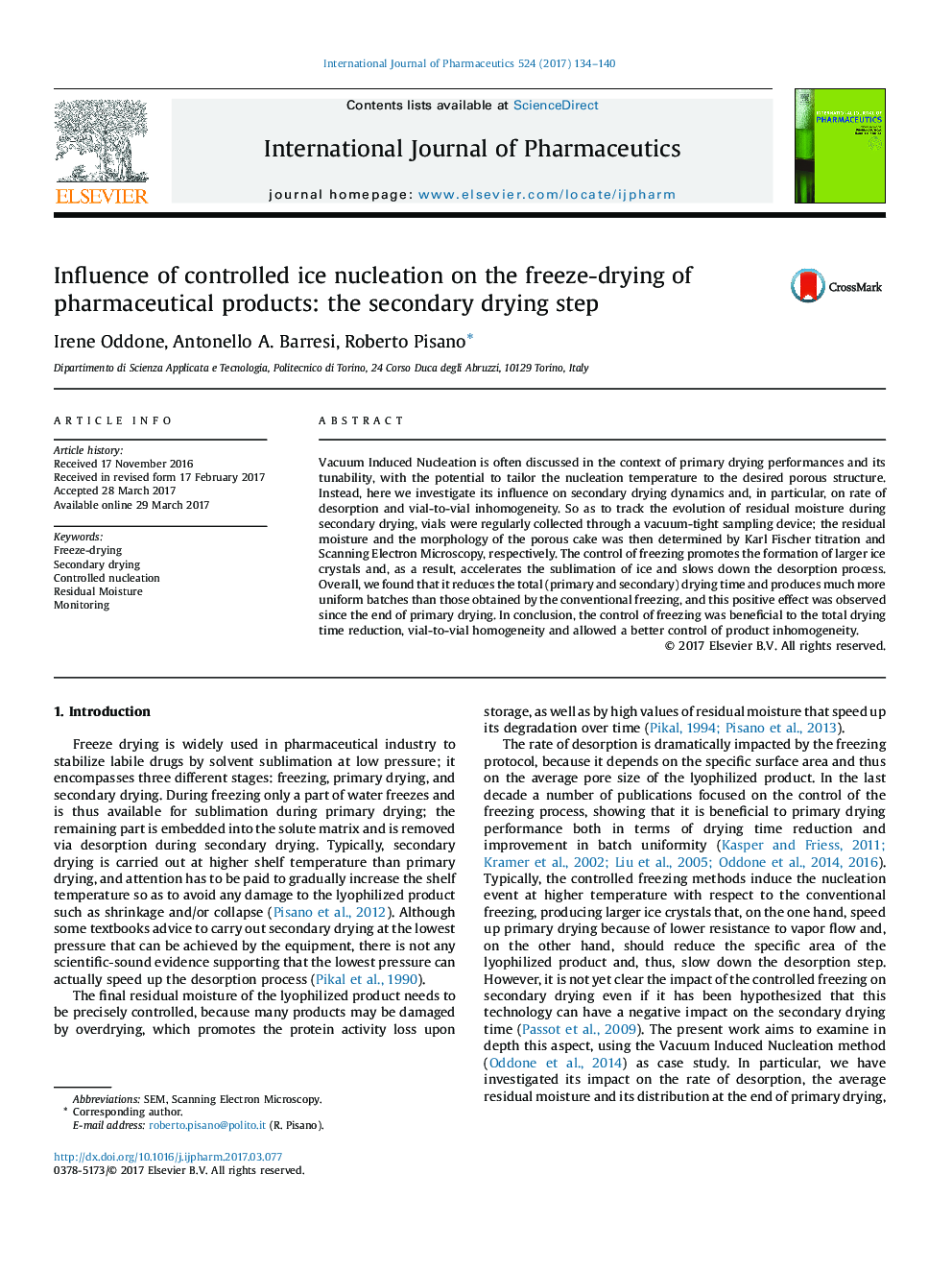| Article ID | Journal | Published Year | Pages | File Type |
|---|---|---|---|---|
| 5550469 | International Journal of Pharmaceutics | 2017 | 7 Pages |
Vacuum Induced Nucleation is often discussed in the context of primary drying performances and its tunability, with the potential to tailor the nucleation temperature to the desired porous structure. Instead, here we investigate its influence on secondary drying dynamics and, in particular, on rate of desorption and vial-to-vial inhomogeneity. So as to track the evolution of residual moisture during secondary drying, vials were regularly collected through a vacuum-tight sampling device; the residual moisture and the morphology of the porous cake was then determined by Karl Fischer titration and Scanning Electron Microscopy, respectively. The control of freezing promotes the formation of larger ice crystals and, as a result, accelerates the sublimation of ice and slows down the desorption process. Overall, we found that it reduces the total (primary and secondary) drying time and produces much more uniform batches than those obtained by the conventional freezing, and this positive effect was observed since the end of primary drying. In conclusion, the control of freezing was beneficial to the total drying time reduction, vial-to-vial homogeneity and allowed a better control of product inhomogeneity.
Graphical abstractDownload high-res image (241KB)Download full-size image
